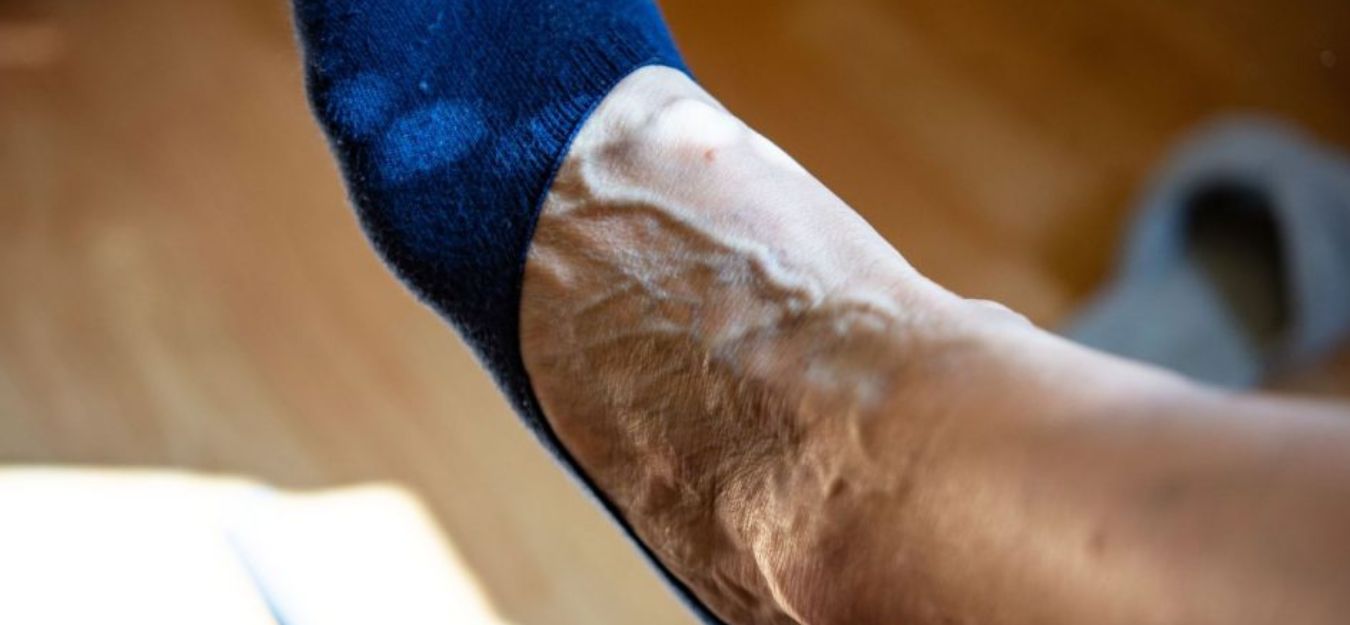Dispelling Misconceptions
What are Varicose Veins?
Varicose veins are enlarged veins that often develop in the lower legs. Different factors may put a person at risk for developing varicose veins, such as obesity and pregnancy. But are varicose veins a sign of a serious condition? Can a varicose vein be a cancer symptom?
The article below covers any varicose vein, cancer connection and other dangers of the enlarged veins.
What are Varicose Veins?
Varicose veins are swollen or enlarged veins near the skin’s surface. The veins also often appear twisted. Varicose veins can develop when weak valves allow the blood to flow backward within the vein. The veins can become swollen and leg swelling may develop. The veins also often appear raised and purple or bluish through the skin.
According to the National Institutes of Health, about 20 percent of people will get varicose veins at some point in their lifetime. Although they can develop in younger people, varicose veins are much more common in older adults. Women also develop varicose veins more often than men.
Can Varicose Veins be a Sign of Cancer?
Varicose veins can look painful and sometimes they are uncomfortable. But despite their often-unsightly appearance, varicose veins are not a sign of cancer.
Varicose veins in themselves do not usually signal other dangerous medical conditions. But they can become bothersome and unsightly. In addition, people with varicose veins may have a higher risk of a few serious vascular conditions.
Although varicose veins are not a sign of cancer, they are sometimes associated with certain more serious problems. For example, research in the Journal of the American Medical Association (JAMA) found that having varicose veins may increase a person’s risk of developing the following:
Vein Thrombosis: People with varicose veins may have an increased level of inflammatory markers, which increases their risk of deep vein thrombosis. A deep vein thrombosis involves a blood clot that develops in one of the body's deep veins. The most common location is the legs. Symptoms of a vein thrombosis include:
- Leg pain.
- Leg swelling.
- Redness.
Pulmonary Embolism: A pulmonary embolism is a blood clot that breaks away from another area of the body and travels to the lungs. In some cases, a pulmonary embolism occurs due to a vein thrombosis. A pulmonary embolism can be life-threatening and requires immediate medical attention. Symptoms of a pulmonary embolism include:
- Shortness of breath.
- Increased heart rate.
- Chest pain.
- Coughing.
Superficial Thrombophlebitis: This condition involves inflammation of the vein below the skin. It usually occurs due to a blood clot. Symptoms may include:
- Sharp pain along the surface of the vein.
- Redness.
- The vein may feel challenging.
Varicose Vein Complications
Varicose veins do not typically cause major complications. But in addition to the association with the above conditions, varicose veins can sometimes cause a complication. The most common complication is a venous leg ulcer. Although it is rare, varicose veins can also bleed.
Signs of varicose vein complications that a doctor should evaluate include:
- Open wound near the vein.
- Bleeding from the varicose vein.
- A vein that feels warm to the touch.
- Major swelling in the leg.
- A rash near the vein.
Should you Treat Varicose Veins?
Not everyone with varicose veins requires treatment. Deciding if treatment is right for you may depend on a few factors, such as the following:
- The Severity of Symptoms: Some people do not experience any symptoms of varicose veins. But in other instances, the veins can cause leg pain, leg swelling and make the legs feel tired and heavy. If symptoms start to interfere with activities, treatment may help.
- Appearance: The decision to treat varicose veins is often made based on how badly the appearance bothers someone. Varicose veins can become large and twisted. This may cause someone self-conscious about wearing certain clothing that exposes the legs.
- Risk of Complications: According to the Mayo Clinic, complications of varicose veins are rare. However, by removing the varicose vein certain complications will be significantly reduced. Treatment for varicose veins may help decrease the risk of skin ulcers, vein thrombosis and bleeding.
Different forms of treatment may have varying success rates. The best treatment option may depend on how severe the symptoms have become.
Various treatment options are available for varicose veins. Treatment may include the following:
- Surgery to remove the veins.
- Compression therapy helps put pressure on the vein and reduce swelling.
- Ablation to close off the varicose vein.
- Medication to reduce the pain associated with varicose veins.
Even after treatment, new varicose veins can develop. Seek medical attention regarding varicose veins and the right treatment option for you.

